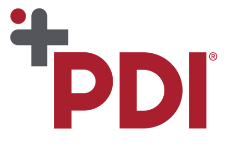Interventional Care


We notice that you are visiting us from . This site only services US-based visitors. Would you like to visit the site that is appropriate for your location?

This year, the Association for Professionals in Infection Control and Epidemiology (APIC) celebrates 50 years since its inception; from its humble beginnings among a core group of “infection control nurses” in Massachusetts to over 15,000 members across 48 countries today. It is, quite literally, and with all due respect to related organizations, the largest professional society worldwide for persons committed to the discipline of infection prevention. This is no small feat and is a testament to the volunteers within the organization that has contributed to APIC’s success.
Professional societies such as APIC are quite the novelty. While the infrastructure at the national level facilitates broad engagement, it remains, largely, an organization of volunteers; who despite having no more “free time” than their colleagues are committed to giving back to the broader community. “For of those to whom much is given much is required” is an adage that spawns any successful volunteer effort.
As we contribute, we inspire others to do the same creating a ripple effect of community engagement today and a pipeline of new leadership tomorrow. At some point in time during my tenure with APIC, it dawned on me that no matter how much I contributed to the association, its mission, vision, or activities I would never be able to balance the books with what the association has given to me in return. The gift of finding new mentors throughout a career, being afforded the opportunity to mentor others, contributing to policy and direction for the profession, and the countless, unending opportunities for continuing education and leadership development.
Whether it is your first year as an infection preventionist or your last, each of us has something to contribute as well as gain. If you have not volunteered to serve the association at either the local or national level in recent years (or ever), there is no time like the present.
In my own personal journey as an infection preventionist, I was aware initially of APIC, but not immediately vested. It took APIC active mentor Elizabeth Fuss, RN, CIC, to pull me aside and ask the question, “Why haven’t you joined APIC?”. When I realized I didn’t have a good answer, I joined and was immediately captivated.
As a new IP, the APIC ListServ was a vital resource asking and answering both the fundamentals of infection prevention as well as the challenges of the day. My first chapter was with Greater Baltimore APIC, and I was enthralled to meet these professionals. While we were all on the same journey the tenure and trajectory of each were unique and inspiring.
Entering the profession with a non-nursing background, I looked to more tenured professionals from similarly non-traditional settings such as Kathy Arias, MS, MT, SM, CIC who began her career, as I did as a medical technologist and Russ Olmsted, MPH, CIC, FAPIC who but was a walking repository of clinical and research experts who both served as APIC President in my early years. Each connection afforded a new learning opportunity as well as a chance to serve at both the local chapter and national level.
As APIC marks a half-century of service to the infection prevention community, now is a good time to celebrate and reflect on what the association means to us. This is not the time to rest on our laurels but examine what challenges our community will likely face in the coming years. This year, Garcia and colleagues addressed 14 foundational practice challenges for IPs and infection prevention programs.1 Analogous to past APIC Research Committee position statements these opportunities lay out a roadmap of needs for infection prevention in the coming years and APIC, and as its members are called on to answer these and future challenges to ensure another successful 50 years.